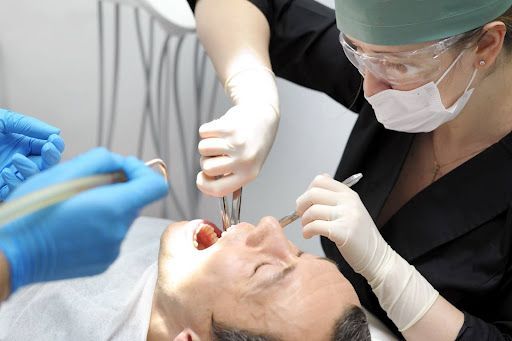What is Cracked Tooth Syndrome?
November 20, 2013
As the name implies, cracked tooth syndrome is when your tooth has a crack or fracture that extends into the dentin of your tooth. Sometimes the crack can reach the pulp of your tooth, which may result in pain.
Causes
There can be many causes for a fractured tooth. Some include: grinding, chewing on hard food (ice, popcorn kernels, hard candy,) and injury. A large change in mouth temperature may also cause your teeth to crack, such as eating hot soup and then drinking cold water right afterward. Teeth that have large restorations may be susceptible to fracture as the restoration weakens the tooth structure. These are some of the most common causes, but there are others.
As the causes of cracked tooth syndrome are so varied, it is hard to prevent. However, there are some measures you can take to help prevent cracked teeth. If you are a heavy grinder, wearing a nightguard or NTI can help reduce pressure and reduce the risk of fracturing a tooth – especially if you have restorations on your teeth. Avoid chewing on hard foods. Cracking nuts and opening items with your teeth should be avoided as well.
Diagnosis
Fractured teeth can be difficult to diagnose. They do not show up on x-rays and are sometimes difficult to see during a visual exam. Cracks that extend through the enamel and reach into the dentin and pulp may cause intermittent pain when you chew or bite. You may also experience sensitivity to hot and cold. If the fracture is only in the enamel, you may not experience any symptoms.
If you believe that you have a cracked tooth, you should schedule an appointment with your dentist. As there are many different causes of tooth pain, our Evanston dentists are able to take x-rays and test your teeth to determine the cause of your pain. Although cracked teeth do not show up on x-rays, if there is another cause, such as decay or an abscess; it may appear on an x-ray.
Treatment
Treating cracked tooth syndrome depends on the severity of the fracture. If the crack is small and doesn’t reach all the way to the gum line, our Evanston dentists will most likely recommend a large onlay. If the crack is larger, they may recommend a crown. In either case, the onlay or crown helps stabilize the tooth and may address the issue.
As there is no way to tell how far a crack reaches into a tooth, the crown or onlay may not solve the issue. If you are still experiencing pain after you have a crown placed, then the next option would be to have root canal therapy. In this case, the crack has most likely reached into the pulp of the tooth or far below the gum line. In some cases, during your root canal therapy, the endodontist may discover that the crack reaches all the way through the root of your tooth. If this is the case, then the tooth should be extracted. After extraction there are several different options to replace your tooth – including implants or a bridge.
Diagnosing a cracked tooth may be difficult, but this is even more of a reason to get your tooth fixed as soon as possible. A tooth that is treated early has a better chance of survival. By the time you feel pain, it may be too late to save your tooth. If you are in pain, contact our Evanston dentist office so that our dentists can help.
The post What is Cracked Tooth Syndrome? appeared first on Stephens Dentistry.







